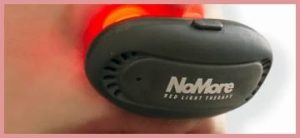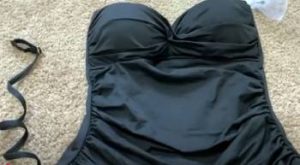When your dog begins to show the unmistakable signs of joint degeneration—rising slowly from a resting position, pausing midway up a flight of stairs, or licking their joints with increasing persistence—you face the challenge of finding effective support that addresses the underlying structural changes.
Wuffes and Cosequin represent two fundamentally different strategies for managing joint health.
Cosequin focuses on delivering high concentrations of the primary molecular building blocks required for cartilage maintenance, while Wuffes employs a broader-spectrum approach emphasizing natural anti-inflammatory compounds and joint lubrication.
After systematically testing both products on my aging Labrador Retriever over a period of fourteen months, the differences in their approaches and outcomes became clearly defined.
Understanding these differences enables you to select the supplement that most directly addresses your dog’s specific joint health requirements.
| Feature | Cosequin Maximum Strength Plus MSM Chews | Wuffes Advanced Hip & Joint Chews |
| Primary Ingredients | Glucosamine HCl 1200 mg, Chondroitin Sulfate 900 mg, MSM 1000 mg | Glucosamine 400 mg, Chondroitin 50 mg, Green-lipped mussel 50 mg, MSM 200 mg, Hyaluronic acid 10 mg |
| Delivery Format | Soft chews | Pork-flavored soft chews |
| Daily Dosage (60-120 lb dog) | 2 chews daily (4 chews during loading phase) | 2 chews daily (4 chews during loading phase) |
| Loading Dose Required | Yes, double dose for 4-6 weeks | Yes, double dose for 4 weeks |
| Monthly Cost (approximate) | $55-65 | $40-50 |
| Primary Mechanism | Provision of cartilage precursor molecules for matrix synthesis | Multi-pathway inflammation control and synovial lubrication |
| Time to Observable Improvement | 4-6 weeks | 3-4 weeks |
| Formulation Focus | Structural cartilage support | Inflammatory modulation and joint lubrication |
Testing Wuffes and Cosequin on My Dog’s Joint Stiffness
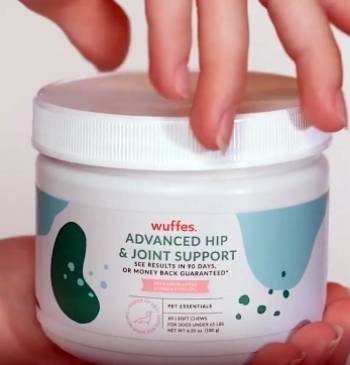
The progression of my Labrador Retriever’s joint problems unfolded gradually but unmistakably over the course of a year.
What began as occasional hesitation when rising from a prolonged rest position evolved into a more consistent pattern of stiffness.
Morning walks required several minutes of deliberate, shortened strides before he achieved anything approaching normal mobility.
A set of six porch steps, which he had previously navigated without conscious effort, became a deliberate process marked by frequent pauses and visible discomfort.
The constant licking of his front elbows—particularly the right one—created persistent areas of hair loss and skin irritation that suggested both mechanical stress and underlying inflammatory processes.
Following a veterinary examination that confirmed degenerative joint changes without acute injury, I began treatment with Cosequin Maximum Strength Plus MSM chews.
The prescribed regimen followed the established protocol of administering four chews per day—two in the morning and two in the evening—for the initial four-week loading phase, followed by maintenance dosing of two chews daily.
During the first two weeks, changes remained subtle, consisting primarily of marginally reduced duration of morning stiffness.
However, by the conclusion of the loading phase, the improvements became more substantial.
The time required to achieve comfortable mobility after rising decreased from approximately five minutes to less than one minute.
Navigation of the porch steps proceeded without intermediate pauses, and the frequency and intensity of elbow licking decreased substantially.
After establishing a six-month baseline with Cosequin, I transitioned to Wuffes to evaluate the comparative effectiveness of its formulation.
The switch presented no administration difficulties, as the pork-flavored chews demonstrated superior palatability compared to the chicken-flavored Cosequin formulation.
Within the first three weeks of Wuffes administration, several secondary benefits became apparent.
My dog’s coat developed a noticeably improved texture and luster, transitioning from a dry, brittle appearance to one characterized by greater shine and density.
Joint stiffness remained controlled during this initial period, with morning mobility approximating the levels achieved during Cosequin treatment.
However, subsequent evaluation over additional months revealed differences in performance under varying conditions.
During a period of particularly cold and damp weather, which typically exacerbates arthritic symptoms, the protective effect against stiffness appeared less robust with Wuffes compared to previous experience with Cosequin.
The duration of initial stiffness increased modestly, and stair navigation occasionally involved brief hesitations that had been absent during Cosequin administration.
This pattern repeated through multiple subsequent cycles of alternating between the two supplements.
Cosequin consistently provided the most reliable suppression of stiffness symptoms, particularly during periods of environmental challenge such as cold weather or after periods of relative inactivity.
Wuffes maintained adequate comfort levels and demonstrated clear advantages in terms of coat quality and supplement palatability, but it did not replicate the same degree of structural support evident with Cosequin during periods of increased joint stress.
Detailed Comparison of Formulation Approaches
The fundamental distinction between Cosequin and Wuffes lies in their respective strategies for supporting joint health.
Cosequin adopts a direct, precursor-focused approach, emphasizing the delivery of large quantities of glucosamine and chondroitin—the molecular components that serve as raw materials for cartilage synthesis.
These compounds contribute directly to the production of proteoglycans and other extracellular matrix constituents that determine cartilage’s ability to resist compressive forces and maintain structural integrity.
Wuffes pursues a more integrative strategy, relying primarily on green-lipped mussel as a source of multiple bioactive compounds.
This ingredient provides a spectrum of naturally occurring joint-supportive elements, including omega-3 fatty acids that modulate inflammatory pathways, along with smaller amounts of glucosamine, chondroitin, and other glycosaminoglycans.
The inclusion of hyaluronic acid further differentiates this approach by targeting the lubrication properties of synovial fluid, which influences the biomechanical environment within the joint.
Each formulation demonstrates particular strengths within its intended application.
Cosequin’s high-dose precursor strategy proves most effective when the primary therapeutic requirement consists of replenishing and maintaining cartilage matrix in the context of ongoing degenerative processes.
The substantial quantities of molecular building blocks enable more comprehensive support for the biosynthetic activities required to offset cartilage erosion.
Wuffes formulation aligns more closely with requirements centered on inflammatory modulation and synovial function.
The combination of omega-3 fatty acids and hyaluronic acid addresses multiple aspects of the joint’s inflammatory environment and lubrication requirements, producing benefits that extend beyond cartilage matrix support to include improvements in articular mechanics and secondary dermatological effects.
Clinical and Practical Considerations
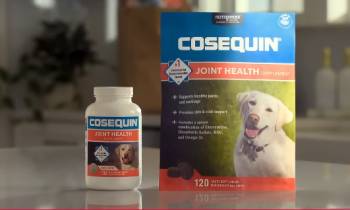
Selection between these supplements requires consideration of the specific pathological processes affecting an individual dog.
For animals exhibiting radiographic evidence of joint space narrowing, substantial lameness following periods of rest, or consistent difficulty with weight-bearing activities, the provision of concentrated cartilage precursors assumes greater importance.
In such cases, the capacity to deliver substantial quantities of glucosamine and chondroitin directly supports the metabolic demands of cartilage maintenance.
Conversely, when the predominant clinical presentation consists of episodic inflammatory flare-ups, stiffness primarily associated with inflammatory processes, or concurrent dermatological manifestations, the multi-component anti-inflammatory profile of Wuffes demonstrates particular utility.
The natural lipid profile of green-lipped mussel provides broad-spectrum suppression of pro-inflammatory mediators, while hyaluronic acid contributes to improved synovial function.
Administration requirements also factor into practical decision-making.
Both products necessitate loading dose periods, though Cosequin typically requires a longer initial phase of doubled supplementation.
Palatability considerations favor Wuffes, as the pork-flavored presentation consistently elicits voluntary consumption across a wider range of dogs compared to the chicken-flavored Cosequin chews.
Also Read: My Thoughts On Pacific Foods Bone Broth
Pros and Cons of Cosequin

Pros
- Supplies exceptionally high concentrations of glucosamine hydrochloride and chondroitin sulfate—1200 mg and 900 mg respectively—delivering substantial quantities of the primary molecular precursors essential for glycosaminoglycan synthesis and cartilage matrix maintenance.
- MSM inclusion at 1000 mg provides a concentrated source of bioavailable sulfur, a critical component required for the production of proteoglycans and collagen within joint tissues.
- Benefits from extensive clinical research specifically validating the efficacy of glucosamine and chondroitin at these dosage levels for improving joint function, reducing lameness, and supporting cartilage integrity.
- Loading dose protocol facilitates rapid attainment of therapeutic concentrations within joint tissues, typically producing measurable improvements in mobility within four to six weeks.
- Soft chew format supports consistent daily administration for the majority of dogs.
Cons
- Loading dose requirement doubles supplement consumption—and associated cost—for the initial four to six weeks, creating a substantial upfront financial requirement.
- Monthly maintenance costs exceed those of many alternative joint supplements due to the elevated concentrations of primary active ingredients.
- Formulation lacks supplementary components such as hyaluronic acid, specialized anti-inflammatory extracts, or concentrated sources of omega fatty acids.
- Chicken-flavored soft chews may encounter resistance from some dogs, potentially requiring alternative administration strategies.
Pros and Cons of Wuffes
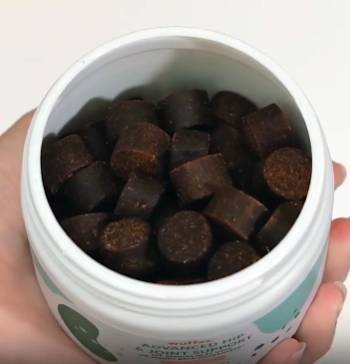
Pros
- Green-lipped mussel serves as a foundational ingredient, supplying a comprehensive array of joint-supporting compounds including omega-3 fatty acids, naturally occurring glycosaminoglycans, chondroitin, and specialized anti-inflammatory lipids known as ETAs.
- Hyaluronic acid component specifically addresses synovial fluid production and joint lubrication, supporting smoother articular movement.
- Pork flavoring results in excellent voluntary consumption, facilitating reliable daily administration without the need for concealment techniques.
- Omega-3 fatty acid content produces secondary benefits including improved coat quality, reduced shedding, and enhanced skin condition.
- Overall cost of supplementation remains lower than high-dose glucosamine/chondroitin formulations.
Cons
- Provides substantially reduced concentrations of glucosamine (400 mg) and chondroitin (50 mg), limiting the quantity of cartilage precursor molecules available for matrix repair and maintenance.
- Dependence on whole-food sources such as green-lipped mussel introduces the potential for variability in active compound concentrations across different production batches.
- Lower levels of foundational cartilage building blocks reduce the capacity for comprehensive structural support in dogs exhibiting moderate to advanced degenerative joint disease.
- Product availability restricted to soft chew format, without alternative delivery mechanisms such as capsules, powders, or liquids.
Also Read: My Thoughts On Birdie & Louie Dog Food
Frequently Asked Questions (FAQs)
Supplements containing additional active ingredients such as avocado soybean unsaponifiables provide enhanced cartilage-protective effects beyond the glucosamine and chondroitin matrix support offered by Cosequin.
Veterinarians frequently recommend Wuffes for dogs requiring inflammation management, joint lubrication support, and maintenance therapy following initial treatment with more concentrated precursor formulations.
Debate centers on the variable intestinal absorption and bioavailability of chondroitin sulfate, though clinical outcome studies continue to support the efficacy of the specific glucosamine/chondroitin combination.
Cosequin remains the most frequently recommended joint supplement among veterinary professionals due to the extensive body of research supporting its glucosamine and chondroitin formulation.
Final Thoughts
When confronted with progressive joint degeneration in your dog, selecting the appropriate supplement requires matching the therapeutic approach to the predominant pathological process.
Cosequin provides the concentrated molecular resources necessary for cartilage matrix maintenance, proving particularly valuable when structural support represents the primary requirement.
Wuffes offers effective management of inflammatory components and synovial function, delivering additional benefits for coat and skin health while maintaining mobility in less severe cases.
By understanding the specific mechanisms through which each product operates, you can make an informed decision that aligns with your dog’s individual clinical needs and provides the most effective support for preserving joint function and quality of life.

